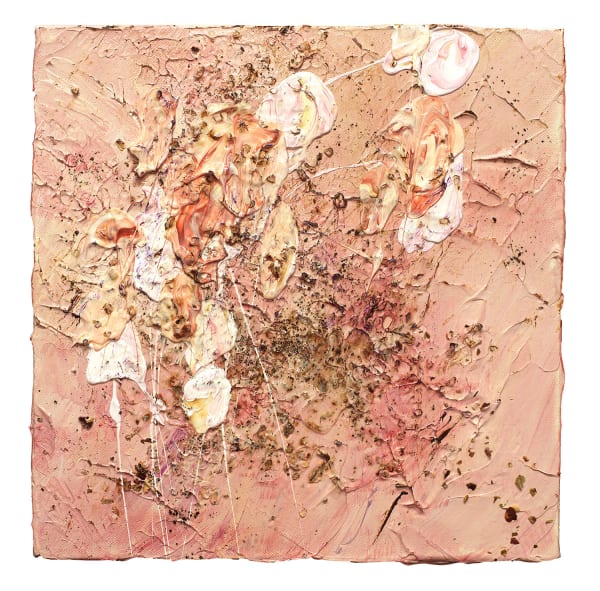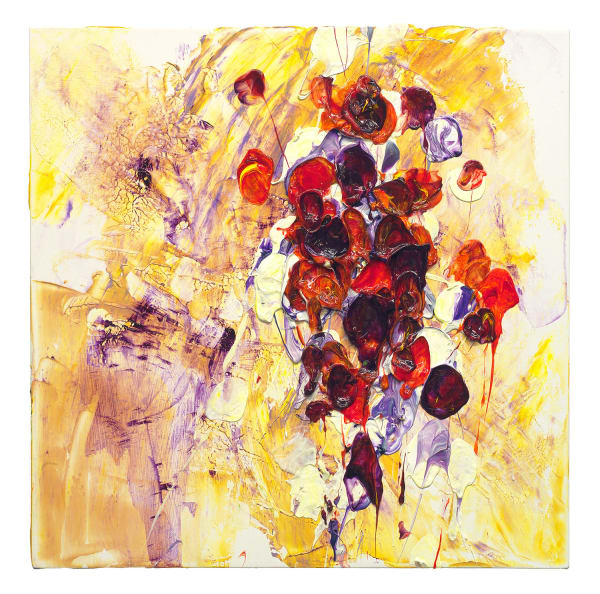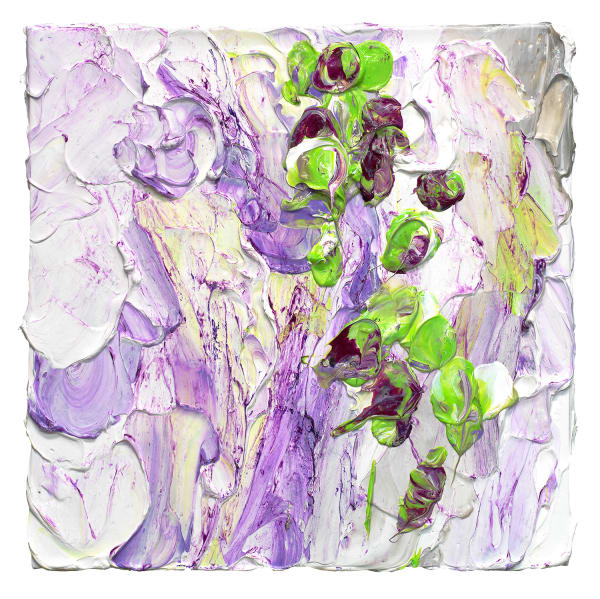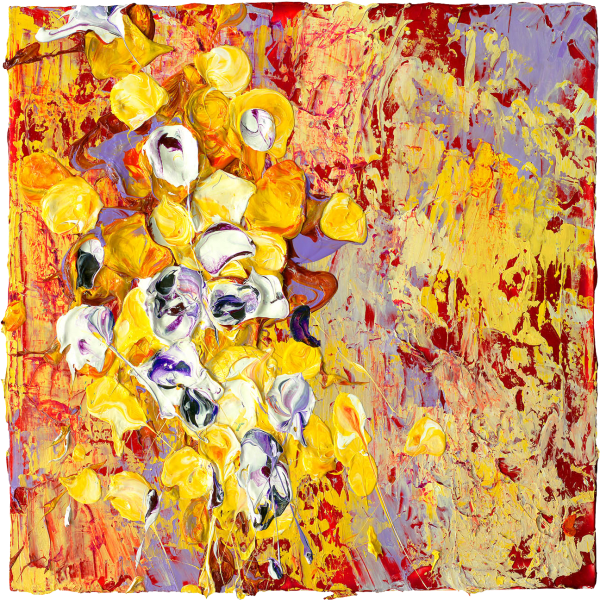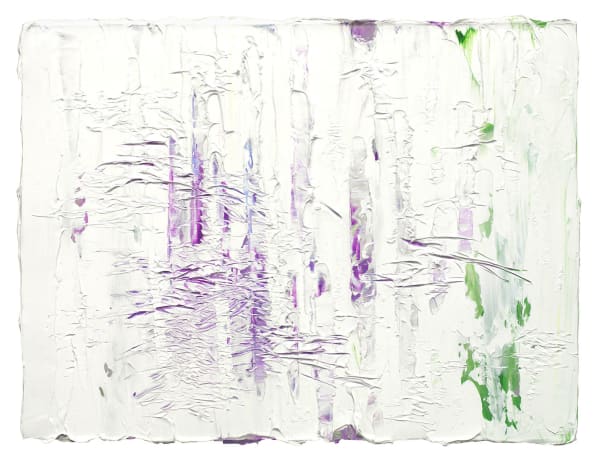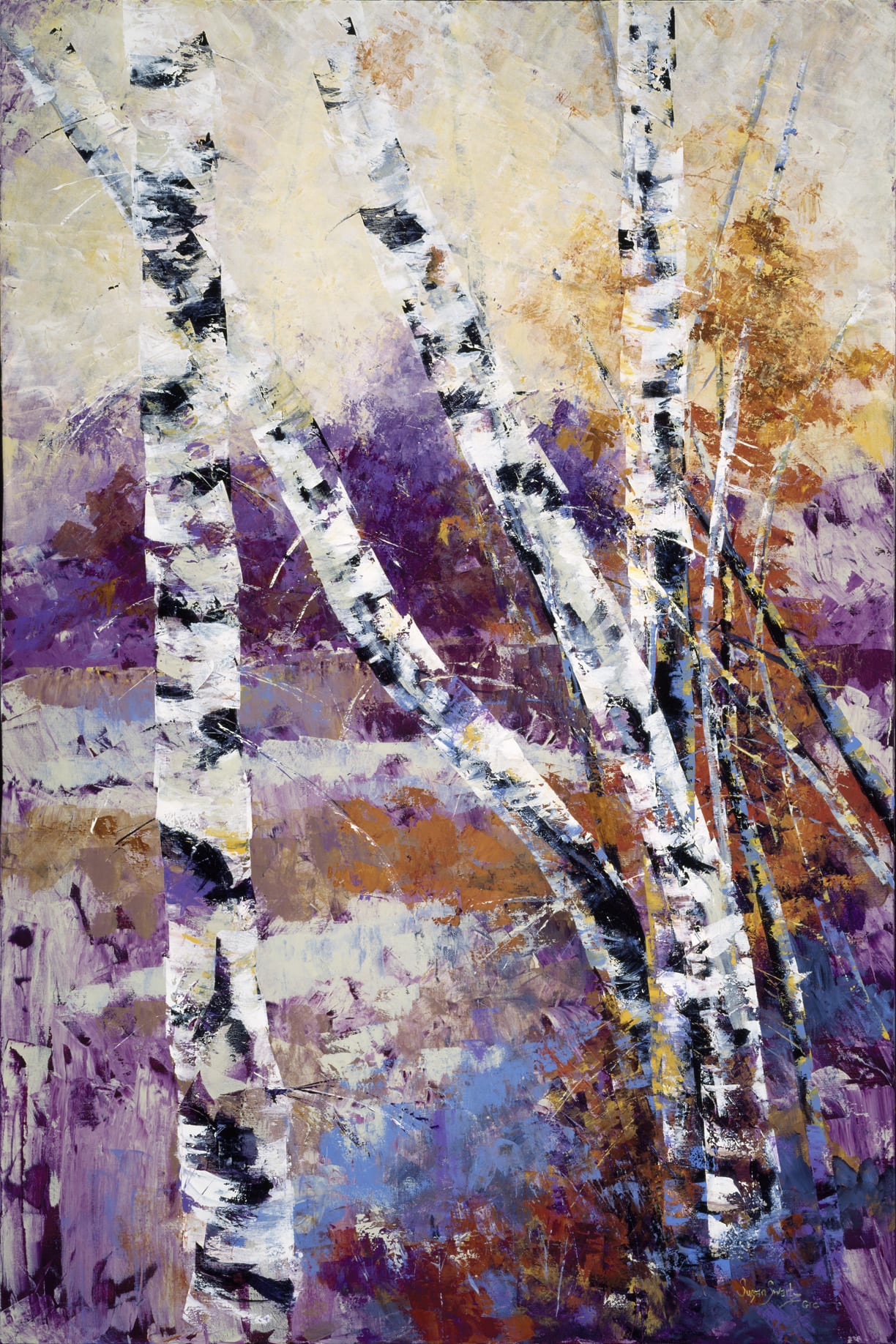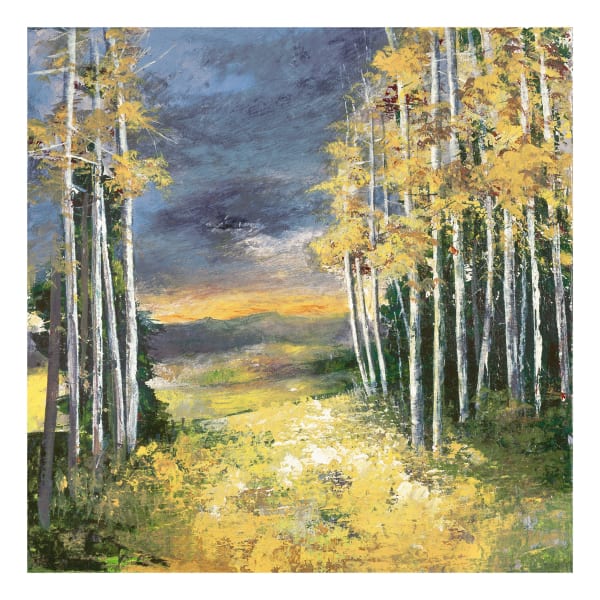Georges Bergès Gallery presents, Renewal, a solo exhibition of work by Susan Swartz, curated by world renowned art historian and critic Donald Kuspit. The exhibition coincides with Swartz’s two-person installation at the Palazzo Bembo in Italy at the 60th Venice Biennale alongside Laddie John Dill.
-
Midway through her life, Swartz faced life-altering illnesses that transformed her perspective on both life and art. This pivotal experience shifted her painting from representational to abstract, evoking nature rather than depicting it directly. Fragments of the natural world—the very essence of life—were collaged into her works, enhancing their tactile quality and adding layers of perceptual complexity.
-
In his exhibition statement, Donald Kuspit writes that Swartz creates deeply feminist art as a bold response to the historical disrespect faced by both nature and women at the hands of the patriarchy, a sentiment powerfully articulated by Carolyn Merchant in her seminal work, The Death of Nature: Women, Ecology and the Scientific Revolution (1980). Through her art, Swartz challenges these entrenched narratives, celebrating the strength and resilience of both women and the natural world.
-
 Sunflowers 18, 202420 x 20 in
Sunflowers 18, 202420 x 20 in
50.8 x 50.8 cm -
Sunflowers
The Sunflowers series incorporates dried natural elements including flora, herbs, seeds, grasses, and sunflowers. Real sunflower heads are prominently featured, highlighting their dark, circular discs and showy, yellow rays. The series is a continuation of Evolution of Nature, which similarly integrates natural elements and acrylic to create opulent yet playful sculptural surfaces, connecting Swartz's personal journey towards optimal health with the powerful benefits of nature. -
 Sunflowers 15, 202460 x 60 in
Sunflowers 15, 202460 x 60 in
152.4 x 152.4 cm -
 Sunflowers 16, 202448 x 72 in
Sunflowers 16, 202448 x 72 in
121.9 x 182.9 cm -
 Sunflowers 14, 202436 x 60 in
Sunflowers 14, 202436 x 60 in
91.4 x 152.4 cm -
Evolution of Nature
Swartz's series, Evolution of Nature, pays tribute to the natural elements that healed her from two environmental-borne illnesses. The series acknowledges the dichotomy of nature with reverence. Dried fruits, flora, and herbs protrude alongside other nutrient-rich elements in complex compositions. -
 Evolution of Nature 26, 202272 x 72 in
Evolution of Nature 26, 202272 x 72 in
182.9 x 182.9 cm -
Nature's Bouquet
Nature’s Bouquet studies floral arrangements through tangible globs and drips of paint. This technique celebrates the dimension of the medium while building a strong sense of movement and depth. In each piece, abundant pigments and texture burst from solid-colored backgrounds in an exhilarating expression of the movement of flower petals floating in the wind and cascading through the water. -
 Nature's Bouquet 78, 202424 x 48 in
Nature's Bouquet 78, 202424 x 48 in
61 x 121.9 cm -
 Nature's Bouquet 80, 202436 x 60 in
Nature's Bouquet 80, 202436 x 60 in
91.4 x 152.4 cm -
"Many of Swartz’s abstract paintings are squares, a transcendental form “absolutely beautiful in itself,” as Plato said. It is a symbol of Divine Perfection. “The square = feeling,” Malevich wrote, and Albers’ squares, like Malevich’s, have come to be regarded as religious icons. Albers was a practicing Catholic, and Swartz has said her art is “motivated and inspired by scripture,” confirming its sacred, transcendental character." - Donald Kuspit
-
-
Trees
"Forests are the great subject of my career-the spectrum of colors that is created as light from different times of the day and year pass through the branches and leaves; the shadows they create; the look, feel and sound of wind passing through them; the architecture of their roots and branches. I love listening to the stories of trees. In Utah we have aspens we call "Quakies". They stand firm and tall and have an interconnected root system-we as humans have interconnected root systems and we can stand firm and tall. We need to preserve our natural habitat to preserve ourselves." - Susan Swartz
-
 Bhutan - Rice Fields and Prayer Flags, 201448 x 72 in
Bhutan - Rice Fields and Prayer Flags, 201448 x 72 in
121.9 x 182.9 cm -
 The Awakening, 200972 x 48 in
The Awakening, 200972 x 48 in
182.9 x 121.9 cm -
""In the woods is perpetual youth,” Emerson wrote, and so it is with Swartz’s paintings of trees. They are part of the grand tradition of American landscape painting, but where the Hudson River School offered us grand vistas of raw nature, Swartz puts us in intimate relation with nature, her close-ups of it reminding us of our dependence on it." - Donald Kuspit
-
Susan Swartz’s paintings are experiential. They speak to us profoundly and they remind us of the impermanence of life. Walt Whitman asked the persistent question we all ask eventually in our life. “What good is life? Answer: that you are here, life and existence, that the powerful play goes on and you may contribute a verse.” And what will be your verse?Swartz's work doesn’t dictate, it neither boxes you in or tell you what to see. It's participatory in that it allows us to see ourselves in the work. It pulls, pushes and draws those aspects within us long forgotten or previously unknown - journeys of self discovery. Most moving is the sense of nostalgia and memories of things past. Fading flowers, textured paint; being and becoming. Leaving us with the question if a memory is something we have, or something we’ve lost.Renewal is on view at Georges Bergès Gallery until November 10, 2024.
-
 Donald Kuspit
Donald Kuspit
Donald Kuspit is one of America's most distinguished art critics. In 1983 he received the prestigious Frank Jewett Mather Award for Distinction in Art Criticism, given by the College Art Association. In 1993 he received an honorary doctorate in fine arts from Davidson College, in 1996 from the San Francisco Art Institute, and in 2007 from the New York Academy of Art. In 1997 the National Association of the Schools of Art and Design presented him with a Citation for Distinguished Service to the Visual Arts. In 1998 he received an honorary doctorate of humane letters from the University of Illinois at Urbana-Champaign. In 2000 he delivered the Getty Lectures at the University of Southern California. In 2005 he was the Robertson Fellow at the University of Glasgow. In 2008 he received the Tenth Annual Award for Excellence in the Arts from the Newington-Cropsey Foundation. In 2013 he received the First Annual Award for Excellence in Art Criticism from the Gabarron Foundation. He has received fellowships from the Ford Foundation, Fulbright Commission, National Endowment for the Arts, National Endowment for the Humanities, Guggenheim Foundation, and Asian Cultural Council, among other organizations.Read Susan Swartz, Transcendentalist by Donald Kuspit in Whitehot Magazine











